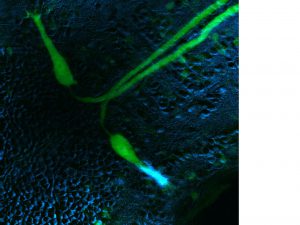News
PROJECT CLOSED
Our project “Optopharmacology: new vistas in drug discovery” was successfully closed
Our joint project with Printnet Ltd. and Semmelweis University successfully ended. This project received funding between 2015-2018 from the National Research, Development and Innovation Office. The Competitiveness & Excellence Contract project focused on the application of our recently developed Molecular Tattoo technology in drug discovery research.
MOLECULAR TATTOO AMONG THE 12 TOP ERC PROJECTS
European Research Council is celebrating its 5000th grantee. To make this event even more memorable, ERC selected 12 representative projects from the previous years. We are proud that molecular tattoo, developed by András Málnási-Csizmadia is one of them.
MEDIA APPEARANCES
Molecular tattoo become surprisingly popular right after its publication; check our media appearances in the Press section.
MOLECULAR TATTOO ON THE COVER OF CELL PRESS’ CHEMISTRY & BIOLOGY
Our results have been published in the Resource section of Chemistry & Biology, Volume 22, Issue 4. The article is featured on the cover of the magazine (cover design: Miklós Képiró).
As the caption says: Precise, localized confinement of drug effects has been a long-standing aim of researchers. Képiró et al. (pp. 548–558) introduce an optopharmacological technology named molecular tattooing that confines drug effects into subfemtoliter volumes of live cells and organisms, without exerting any systemic- or side-effects outside the targeted area. The cover image shows a tattooed MT shape that was engraved into a single live HeLa cell by covalently attaching azidoblebbistatin to nonmuscle myosin 2 upon two-photon irradiation. After tattooing, a two-photon microscopic picture was taken of the cell. The MT shape appears green because azidoblebbistatin-myosin2 covalent complex is fluorescent. Actin network (red) and nuclei (blue) are also shown.



